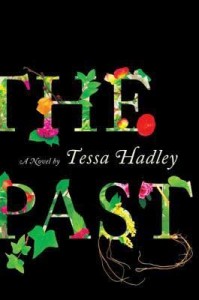Posted February 25, 2016
“The Past”
By Tessa Hadley
By MARWAN ALENEZI
In an inspired twist on family dramas, be they screenplays, short stories or novels, Tessa Hadley shows the darkness of tumultuous family relationships between a diverse group of siblings while depicting a seemingly placid, non-traumatized group of individuals.
 Hadley’s writing is powerfully subtle. The writing in her fifth novel, “The Past,” creeps slowly rather than attack the reader with classic or even horrific familial melancholy or drama. This dense yet still easy to read writing can be credited to many facets of her literary capabilities.
Hadley’s writing is powerfully subtle. The writing in her fifth novel, “The Past,” creeps slowly rather than attack the reader with classic or even horrific familial melancholy or drama. This dense yet still easy to read writing can be credited to many facets of her literary capabilities.
The most obvious and enjoyable seems to be her incredibly astute observations of individuals (possibly inspired by some of her own family experiences).
Other strengths include her insightful symbolism; personal cues the characters exhibit between and towards each other, and the sheer difference in every sibling’s personality and past. Although, on the long run, the factor that shapes the story is the situation these four siblings are in with an old family home.
The house is an old, tattered yet quaint little home on the West English countryside that used to be where their grandparents lived. Their grandfather was a minister well respected in the local community. The house remained his even when his daughter (our main characters’ strong and thick-skinned mother) left to live with her husband in the 1960s, only to come back after her marriage became rough and her husband abandoned her and her (then only three) children.
The novel chronicles the three-week reunion of the house’s third generation. They are four siblings: three sisters and a brother. They are brought back together after living different and separate lives for what Hadley believes to be two equal, yet distinctive, reasons. The first is a simple reunion; the second would be to decide on what to do with the old house.
Other then their polar opposite personalities and histories, the author stressed quite a few things about her character web, both in this novel and even in other ones.
Generally, Hadley’s subjects tend to be rather successful families. Her characters are not terribly tragic or completely dysfunctional. Another fact she stressed was that although they are four siblings, there is no significant age difference between them. They are all middle aged.
The premise and situation are not unique by any literary standard, but with the right ingredients and the various characters’ views on life and marriage, the friction is heated and powerful without coming across as abrasive or even overtly conflicting. Tension brews just beneath the waves because of the story’s setup.
The story begins with Alice, the second oldest sister and a former actress. Alice arrives to the house without her key. She tells her 20-year-old guest, a young man by the name of Kassim, whom she invited impulsively and regrets almost immediately, that her older sister, Herriet, is already here and that there is no way the she would have forgot her key.
Hadley sets the tone of the relationship with a simple teenage view of sisterhood pushed 20 years into the future. According to Hadley, the relationship is a perfect mix of admiration and jealousy. Herriet is “more shy than anyone knew” yet as responsible and dependable as the oldest sibling usually is.
Alice’s younger sister, Fran, is married, and comes to the house with her two kids but not her husband. As opposed to having it be an obvious issue and eventual fight in the story, Hadley keeps this unusual occurrence hushed. The husband’s absence is the topic of discreet apprehension. The only brother, Roland, is the most flamboyant of them. He has been married three times, and brings his latest wife to the old family home during a family reunion.
The story slowly colors in the sibling’s characteristics and, in Hadley’s three chapters, only two are set in the present. Halfway through the novel Hadley gives us the more particular traits of the siblings as well as the perceived, ambiguous origins of those traits. She does this by delving into the past and dedicating a chapter to their teenage years, highlighting the strong role of their late mother, who died of cancer early on.
In short description of Kassim, the bored 20-year-old who regrets coming to this reunion as soon as he arrives, Hadley explains his past almost as much as she does of the family members.
“I don’t want to imply that everyone has a shadow. But that’s what [the novel] is, isn’t it? The past is the shadows…we carry into the present.”
Hadley, as respected as she is among contemporary novelists, may not be a particular reader’s cup of coffee. But one thing is for sure: it is hard to dismiss her eloquence. With the old house as a symbol and the plot’s backbone, this author manifests the true intricacies of sibling relationships using a intuitive fact she brings to life: whoever you are and whatever you do, a sibling will always share your past, and complicatedly mold your future.
- Title: “The Past”
- Author: Tessa Hadley
- Publisher: Random House of Canada, Toronto
- ISBN: 0345816110
- Length: 367 pages
- Formats: Hardcover: $16.25, paperback: $15.99, Kindle: $12.99, audio CD: $ 24.85
